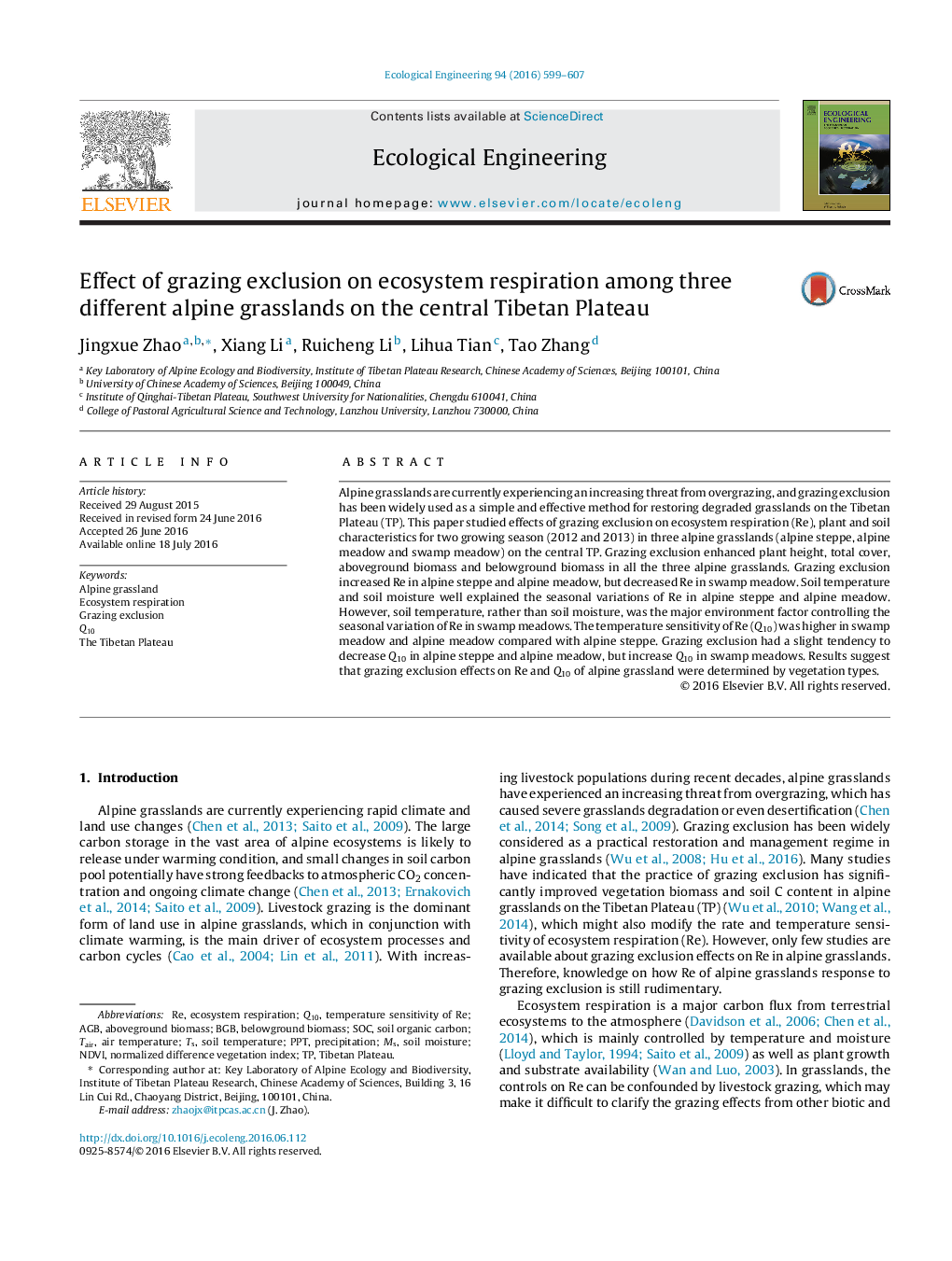| Article ID | Journal | Published Year | Pages | File Type |
|---|---|---|---|---|
| 4388588 | Ecological Engineering | 2016 | 9 Pages |
Alpine grasslands are currently experiencing an increasing threat from overgrazing, and grazing exclusion has been widely used as a simple and effective method for restoring degraded grasslands on the Tibetan Plateau (TP). This paper studied effects of grazing exclusion on ecosystem respiration (Re), plant and soil characteristics for two growing season (2012 and 2013) in three alpine grasslands (alpine steppe, alpine meadow and swamp meadow) on the central TP. Grazing exclusion enhanced plant height, total cover, aboveground biomass and belowground biomass in all the three alpine grasslands. Grazing exclusion increased Re in alpine steppe and alpine meadow, but decreased Re in swamp meadow. Soil temperature and soil moisture well explained the seasonal variations of Re in alpine steppe and alpine meadow. However, soil temperature, rather than soil moisture, was the major environment factor controlling the seasonal variation of Re in swamp meadows. The temperature sensitivity of Re (Q10) was higher in swamp meadow and alpine meadow compared with alpine steppe. Grazing exclusion had a slight tendency to decrease Q10 in alpine steppe and alpine meadow, but increase Q10 in swamp meadows. Results suggest that grazing exclusion effects on Re and Q10 of alpine grassland were determined by vegetation types.
